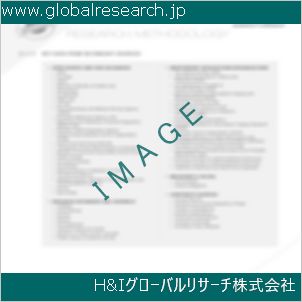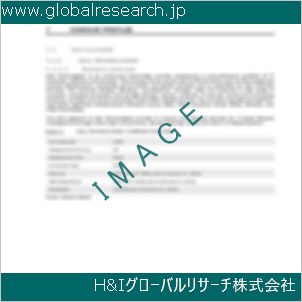Table of Contents
1 Industry Overview of Flon-113
1.1 Definition and Specifications of Flon-113
1.1.1 Definition of Flon-113
1.1.2 Specifications of Flon-113
1.2 Classification of Flon-113
1.3 Applications of Flon-113
1.3.1 Nuclear Application
1.3.2 Non-Nuclear Application
1.4 Industry Chain Structure of Flon-113
1.5 Industry Overview and Major Regions Status of Flon-113
1.5.1 Industry Overview of Flon-113
1.5.2 Global Major Regions Status of Flon-113
1.6 Industry Policy Analysis of Flon-113
1.7 Industry News Analysis of Flon-113
2 Manufacturing Cost Structure Analysis of Flon-113
2.1 Raw Material Suppliers and Price Analysis of Flon-113
2.2 Equipment Suppliers and Price Analysis of Flon-113
2.3 Labor Cost Analysis of Flon-113
2.4 Other Costs Analysis of Flon-113
2.5 Manufacturing Cost Structure Analysis of Flon-113
2.6 Manufacturing Process Analysis of Flon-113
3 Technical Data and Manufacturing Plants Analysis of Flon-113
3.1 Capacity and Commercial Production Date of Global Flon-113 Major Manufacturers in 2023
3.2 Manufacturing Plants Distribution of Global Flon-113 Major Manufacturers in 2023
3.3 R&D Status and Technology Source of Global Flon-113 Major Manufacturers in 2023
3.4 Raw Materials Sources Analysis of Global Flon-113 Major Manufacturers in 2023
4 Capacity, Production and Revenue Analysis of Flon-113 by Regions, Types and Manufacturers
4.1 Global Capacity, Production and Revenue of Flon-113 by Regions 2019-2024
4.2 Global and Major Regions Capacity, Production, Revenue and Growth Rate of Flon-113 2019-2024
4.3 Global Capacity, Production and Revenue of Flon-113 by Types 2019-2024
4.4 Global Capacity, Production and Revenue of Flon-113 by Manufacturers 2019-2024
5 Price, Cost, Gross and Gross Margin Analysis of Flon-113 by Regions, Types and Manufacturers
5.1 Price, Cost, Gross and Gross Margin Analysis of Flon-113 by Regions 2019-2024
5.2 Price, Cost, Gross and Gross Margin Analysis of Flon-113 by Types 2019-2024
5.3 Price, Cost, Gross and Gross Margin Analysis of Flon-113 by Manufacturers 2019-2024
6 Consumption Volume, Consumption Value and Sale Price Analysis of Flon-113 by Regions, Types and Applications
6.1 Global Consumption Volume and Consumption Value of Flon-113 by Regions 2019-2024
6.2 Global and Major Regions Consumption Volume, Consumption Value and Growth Rate of Flon-113 2019-2024
6.3 Global Consumption Volume and Consumption Value of Flon-113 by Types 2019-2024
6.4 Global Consumption Volume and Consumption Value of Flon-113 by Applications 2019-2024
6.5 Sale Price of Flon-113 by Regions 2019-2024
6.6 Sale Price of Flon-113 by Types 2019-2024
6.7 Sale Price of Flon-113 by Applications 2019-2024
6.8 Market Share Analysis of Flon-113 by Different Sale Price Levels
7 Supply, Import, Export and Consumption Analysis of Flon-113
7.1 Supply, Consumption and Gap of Flon-113 2019-2024
7.2 Global Capacity, Production, Price, Cost, Revenue, Supply, Import, Export and Consumption of Flon-113 2019-2024
7.3 USA Capacity, Production, Price, Cost, Revenue, Supply, Import, Export and Consumption of Flon-113 2019-2024
7.4 EU Capacity, Production, Price, Cost, Revenue, Supply, Import, Export and Consumption of Flon-113 2019-2024
7.5 China Capacity, Production, Price, Cost, Revenue, Supply, Import, Export and Consumption of Flon-113 2019-2024
7.6 Japan Capacity, Production, Price, Cost, Revenue, Supply, Import, Export and Consumption of Flon-113 2019-2024
8 Major Manufacturers Analysis of Flon-113
8.1 Manufacturer One
8.1.1 Company Profile
8.1.2 Product Picture and Specifications
8.1.2.1 Type I
8.1.2.2 Type II
8.1.2.3 Type III
8.1.3 Capacity, Production, Price, Cost, Gross and Revenue
8.1.4 Contact Information
8.2 Manufacturer Two
8.2.1 Company Profile
8.2.2 Product Picture and Specifications
8.2.2.1 Type I
8.2.2.2 Type II
8.2.2.3 Type III
8.2.3 Capacity, Production, Price, Cost, Gross and Revenue
8.2.4 Contact Information
8.3 Manufacturer Three
8.3.1 Company Profile
8.3.2 Product Picture and Specifications
8.3.2.1 Type I
8.3.2.2 Type II
8.3.2.3 Type III
8.3.3 Capacity, Production, Price, Cost, Gross and Revenue
8.3.4 Contact Information
8.4 Manufacturer Four
8.4.1 Company Profile
8.4.2 Product Picture and Specifications
8.4.2.1 Type I
8.4.2.2 Type II
8.4.2.3 Type III
8.4.3 Capacity, Production, Price, Cost, Gross and Revenue
8.4.4 Contact Information
8.5 Manufacturer Five
8.5.1 Company Profile
8.5.2 Product Picture and Specifications
8.5.2.1 Type I
8.5.2.2 Type II
8.5.2.3 Type III
8.5.3 Capacity, Production, Price, Cost, Gross and Revenue
8.5.4 Contact Information
…
9 Marketing Trader or Distributor Analysis of Flon-113
9.1 Marketing Channels Status of Flon-113
9.2 Traders or Distributors with Contact Information of Flon-113 by Regions
9.3 Ex-work Price, Channel Price and End Buyer Price Analysis of Flon-113
9.4 Regional Import, Export and Trade Analysis of Flon-113
10 Industry Chain Analysis of Flon-113
10.1 Upstream Major Raw Materials Suppliers Analysis of Flon-113
10.1.1 Major Raw Materials Suppliers with Contact Information Analysis of Flon-113
10.1.2 Major Raw Materials Suppliers with Supply Volume Analysis of Flon-113 by Regions
10.2 Upstream Major Equipment Suppliers Analysis of Flon-113
10.2.1 Major Equipment Suppliers with Contact Information Analysis of Flon-113
10.2.2 Major Equipment Suppliers with Product Pictures Analysis of Flon-113 by Regions
10.3 Downstream Major Consumers Analysis of Flon-113
10.3.1 Major Consumers with Contact Information Analysis of Flon-113
10.3.2 Major Consumers with Consumption Volume Analysis of Flon-113 by Regions
10.4 Supply Chain Relationship Analysis of Flon-113
11 Development Trend of Analysis of Flon-113
11.1 Capacity, Production and Revenue Forecast of Flon-113 by Regions and Types
11.1.1 Global Capacity, Production and Revenue of Flon-113 by Regions 2024-2029
11.1.2 Global and Major Regions Capacity, Production, Revenue and Growth Rate of Flon-113 2024-2029
11.1.3 Global Capacity, Production and Revenue of Flon-113 by Types 2024-2029
11.2 Consumption Volume and Consumption Value Forecast of Flon-113 by Regions, Types and Applications
11.2.1 Global Consumption Volume and Consumption Value of Flon-113 by Regions 2024-2029
11.2.2 Global and Major Regions Consumption Volume, Consumption Value and Growth Rate of Flon-113 2024-2029
11.2.3 Global Consumption Volume and Consumption Value of Flon-113 by Types 2024-2029
11.2.4 Global Consumption Volume and Consumption Value of Flon-113 by Applications 2024-2029
11.3 Supply, Import, Export and Consumption Forecast of Flon-113
11.3.1 Supply, Consumption and Gap of Flon-113 2024-2029
11.3.2 Global Capacity, Production, Price, Cost, Revenue, Supply, Import, Export and Consumption of Flon-113 2024-2029
11.3.3 USA Capacity, Production, Price, Cost, Revenue, Supply, Import, Export and Consumption of Flon-113 2024-2029
11.3.4 EU Capacity, Production, Price, Cost, Revenue, Supply, Import, Export and Consumption of Flon-113 2024-2029
11.3.5 China Capacity, Production, Price, Cost, Revenue, Supply, Import, Export and Consumption of Flon-113 2024-2029
11.3.6 Japan Capacity, Production, Price, Cost, Revenue, Supply, Import, Export and Consumption of Flon-113 2024-2029
12 New Project Investment Feasibility Analysis of Flon-113
12.1 New Project SWOT Analysis of Flon-113
12.2 New Project Investment Feasibility Analysis of Flon-113
13 Conclusion of the Global Flon-113 (CAS 76-13-1) Industry 2024 Market Research Report
| ※参考情報 フロン-113(Flon-113)は、化学式CCl3Fで表される有機フッ素化合物です。この物質は、特に冷却剤や溶剤として広く使用されてきました。その特性から、様々な産業や技術に貢献してきた重要な化合物です。フロン-113は、CAS番号76-13-1で示されることもあり、特に化学的な文献においてその同定に使われる番号です。 フロン-113の特徴として、まずその化学構造が挙げられます。フロン-113はトリクロロフルオロメタンとしても知られ、3つの塩素原子と1つのフッ素原子を持つ構造をしています。この構造は、分子の安定性や特性に大きく寄与しており、常温常圧で気体であることが多いです。化学的には、フロン-113は非可燃性であり、また、化学的に安定であるため、多くの用途での使用に適しています。 フロン-113は、特にその冷却剤としての性質から注目されてきました。主に冷凍機や冷蔵庫、エアコンなどの冷却システムに利用されてきたほか、半導体の製造過程においても重要な役割を果たしています。さらに、フロン-113は溶剤としても使われ、電子部品の洗浄やデグリースに広く利用されてきました。特に洗浄用途では、水よりも優れた性能を持ち、汚れを効率よく除去できるため、高度な精密機器のメンテナンスにも重宝されてきました。 しかしながら、フロン-113の使用には注意が必要です。フロン類はオゾン層にダメージを与えることが知られており、特にモントリオール議定書など国際的な規制の影響を受けて、使用が制限されるようになりました。フロン-113は、オゾン層を破壊する物質として分類されており、その使用は徐々に減少しています。これに伴い、代替物質の開発や、新しい冷却技術の導入が進められています。 環境への影響を考慮し、科学者たちはフロン-113に代わる安全な冷却剤や溶剤の研究を進めているところです。たとえば、HFO(ハイドロフルオロオレフィン)などの新しい化合物がその候補として浮上しています。また、エコフレンドリーな冷却技術や再生可能エネルギーを利用した冷却システムの開発も進行中です。このように、フロン-113の使用が減少する中で、新たな技術や材料が模索されています。 さらに、フロン-113の代替物質を開発する際には、性能だけでなく、その安全性や環境への影響を総合的に評価することが重要です。新しい冷却剤や溶剤は、従来のフロン類に比べてオゾン層への影響が少ないだけでなく、温室効果ガスとしての影響も低いことが求められます。そのため、研究開発においては、持続可能性を追求する視点がますます重要になっています。 フロン-113は、その物理化学的性質や用途において多くの利点を持っていましたが、環境問題の影響により使用が見直されています。これからの時代においては、より環境配慮型の技術開発が必要であり、変わりゆく時代に対応した新しい冷却技術の確立が求められています。 最後に、フロン-113についての理解は、化学や環境学の視点からも非常に重要です。フロンの使用が持つ歴史的背景や環境への影響を知ることは、今後の産業技術や持続可能な社会の実現に向けた一歩として意義があるでしょう。フロン-113は、冷却技術の発展に寄与した重要な物質であり、その教訓を通じてより良い未来を築くための指針となることが期待されます。 |
❖ 免責事項 ❖
http://www.globalresearch.jp/disclaimer












